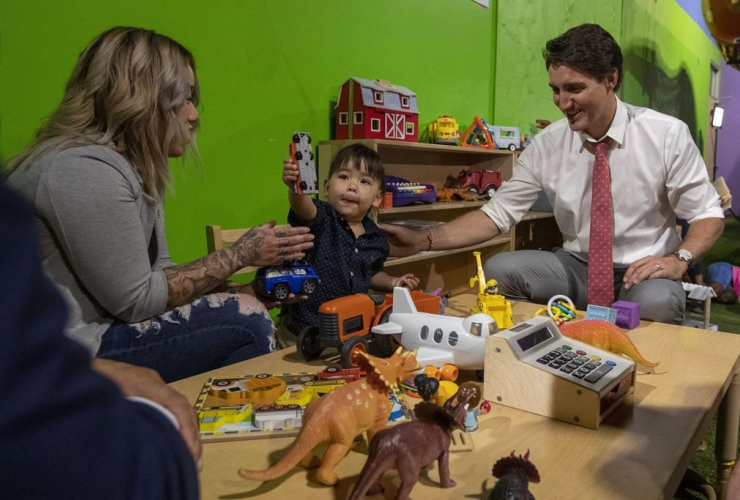Support journalism that lights the way through the climate crisis
The NDP calls it “Greedflation.”
The Conservatives call it “Justinflation.”
The Liberals call it “Global forces beyond our control.”
Whatever you name it, inflation is being felt by millions of Canadians, their finances increasingly strained as costs of living rise.
Food, to give just one example, is now so expensive that nearly half of Canadians sacrifice health to cut grocery costs.
In response to criticism, the Liberal government recently unveiled a plan for grocery price freezes and price-matching campaigns, which it claims will fight inflation and make life more affordable across the country.
The plan’s impact remains to be seen, but one certainty is that Canada has not done enough to fight poverty and that solving the affordability crisis is a matter of survival.
The fight to survive
Roughly four million Canadians live in poverty, including one in five single adults.
Poverty is incredibly stressful and contributes to a reduced sense of agency in one’s life. In a materially driven society, it is stigmatized and leads to shame and isolation, and it leaves people unable to afford healthy food and much-needed medications.
Individuals who experience poverty are at risk of a host of adverse outcomes throughout their lives, including increased hospital visits, depression, anxiety and psychosis, which is true even after untangling poverty from potentially confounding factors.
And the effects can be fatal.
Whether examined internationally, nationally, provincially or within neighbourhoods, poverty is associated with earlier mortality and elevated rates of suicide and suicidal ideation.
Death by suicide rates are highest among the poorest Canadians — rates among Indigenous persons are three times the national average and the leading cause of death for men under 45, while Nunavut, the national leader in child poverty and food insecurity, has seven times the suicide rate of any other province or territory.
Perhaps one of the clearest examples of the link between poverty and suicide comes from the pandemic; poverty rates dropped due to increased government assistance transfers, and, despite the world turning upside down, suicide rates decreased alongside them.
So, it is essential policymakers think of affordability not merely as a financial issue, but as a health and wellness issue, too.
Tackling the problem
How do we approach poverty and wellness together so fewer people suffer?
For one, Canada must lay a stronger foundation from which to address the problem. National and provincial mental health and suicide prevention strategies should recognize the powerful relationship between poverty and well-being, being especially attentive to high-risk demographics and areas of the country.
The role of mental health professionals must evolve as part of this effort. Clients’ material needs should be assessed from the start, and therapists and counsellors should have the knowledge to connect them to local organizations that can help secure housing, healthy food, benefits and employment support.
There should also be greater collaboration between mental health workers, local community organizations and social service agencies to pool resources and provide comprehensive support.
Our public representatives in particular must be bolder in tackling poverty — prioritizing and treating it not only as a financial issue but also as a public health one.
More affordable groceries as proposed would be a start, but far from enough.
Social assistance rates are below the poverty line in every province and must be raised, seniors subsidies should be increased, and there must be sizable boosts in affordable rental supply — an area where the federal government has been shamefully neglectful since the 1990s.
Finally, poverty must be destigmatized.
Low-income persons are often depicted in the media as lazy, dishonest and dangerous when most are honest, hardworking and harmless. More accurate representation can help change the popular narrative on poverty and reduce the shame that contributes to suicidal ideation and action.
Time to act
The expansion of cost-of-living supports during the pandemic shows how people can benefit from even just a few hundred dollars each month but unfortunately, these supports have been withdrawn and people’s margins have tightened again.
Just as people need someone to talk to, they also need dollars in their pocket, food in the fridge, a stable roof over their heads and timely and sufficient health care.
Major change can happen fast when the will is there, and when an issue is a matter of life and death, we have an obligation to take it seriously.
It is time to act before more lives are needlessly lost.
Spencer van Vloten is a nationally published writer and community advocate. He is a recipient of the BC Medal of Good Citizenship, BC Achievement Foundation Community Award, Vancouver Excellence Award, and was named the Rick Hansen Foundation Difference Maker of the Year. You can find more of his work at SpencerV.ca or follow him on X at @SpencerVanCity






Comments